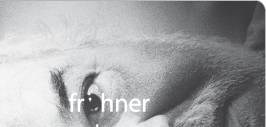"I started out as an artist with Cubism. My main models were Juan Gris and Pablo Picasso in his analytical phase. I sought to investigate and define the term ?form? through a geometrical approach.?
"Met Otto Mühl and Alfred Hrdlicka. The former painted like Cézanne and then like Oskar Schlemmer and by the time I?d reached Cézanne he was already on to Paul Klee. He impresses me incredibly.?
"I realised that I could not continue with the type of painting I had been doing until then and abandoned everything overnight. The next morning I woke up a Tachist.?
"The concept of beauty had become obsolete for me and a number of other artists. The common practice until recently of suppressing the monstrous, obscene barbarities was not my way. I still had a vivid memory of the war and all of its consequences. It was not possible to close the door on reality and to pursue a phoney idea of beauty and harmony in isolation in the studio. The desire to create had taken on a new meaning.?
"Discarded and forgotten objects tell us a lot about people. In my opinion there is more life in a discarded mattress than in marble. It has associations with all phases of human life ? birth, love, death, disease and happiness.?
"It started with Dada, which turned over a new page in terms of aesthetics and created space for the intrusion of reality.?
"Art need not be beautiful but it must be truthful.?
"I have always had a problem with illusion. The best way to portray reality is with reality. If I can preserve a lump of clay in a picture so that it remains a lump of clay, I don?t need to portray it. There is no need for tricks if reality is allowed to speak for itself.?
"I don?t attempt to create a beautiful, aesthetic image of people. I accept reality, which is still beautiful and true even when it is ugly.?
"To liberate this figure from the romantic historical idea that a nude is a beautiful woman or person ? that?s all nonsense. It?s certainly not for me to decide whether a person is beautiful or not.?
"I present creatures that say to their fellows: you are a person like me, and that?s why I?m afraid of you. And then I paint solitude ? its, my and your solitude ? which comes together as a result of fear, mistrust and lack of compassion.?
"My interest in the marginal aspects of life soon attracted me to anonymous wall drawings and scribbled sketches, and I realised that these expressions were real ? they all dealt with people, their needs, passions and yearnings.?
"Since I first came across it, I have been interested in ?outsider art?. It was probably my fellow artist Jean Dubuffet who drew my attention to it when I visited him in Paris in the 1960s and was invited a few days later to his Art Brut collection in rue des Sèvres.?
"The human imagination is expansive and allegorical. It is not possible to ?think? an object for more than a moment. The rogue thought cannot be stopped. The workings of the brain cannot be checked. The alienating thought enriches the image for me; it often breaks out of the pictorial level and framework and becomes a three-dimensional element. It creates tensions in me.?
"I would like artists to accept their political responsibility, regarding themselves and speaking out as fully fledged members of society, and retaining an awareness at all times of the fact that they are a very significant part of society.?
"The theory of art has become more difficult as art itself has become more incidental ? and the business of art omnipresent. Art needs to distance itself from everyday life, however. Education is of necessity ?conservative? (ask your aeroplane pilots, pharmacists, lift mechanics or doctors); there is no faculty for the avant-garde.?
"The master class is a platform for action, a space for the aura of art, a vehicle for experiencing creativity, a vessel that creates an artistic climate offering students not only protection, assistance with questions and information if needed but also a haven in which they can work undisturbed.?
"I have a strong yearning for transcendence. I wouldn?t call it God because the word has too many associations imposed on it by humanity. I am very interested in religiosity. All of my pictures, even the most garish, ugliest and almost blasphemous, are religious pictures.?
"My pictures are an attempt to confront a society that has long become accustomed to a system of suppression. This calls for awareness, however, and creating awareness means uncovering.?
"The artist starts where for others facts end.
"I predict that Adolf Frohner?s women will become classics, like those of Modigliani, Casorati, van Dongen, Kisling and De Kooning. These unattractive types, bent and unpleasant but with an underlying attraction, exist in real life. This fine, stylistically exaggerated ambiguity is the key to understanding this beguiling artist, who has been broadly associated with names like Kirchner, Nolde, Bacon and De Kooning.?
(Dino Buzzati, 1970)
